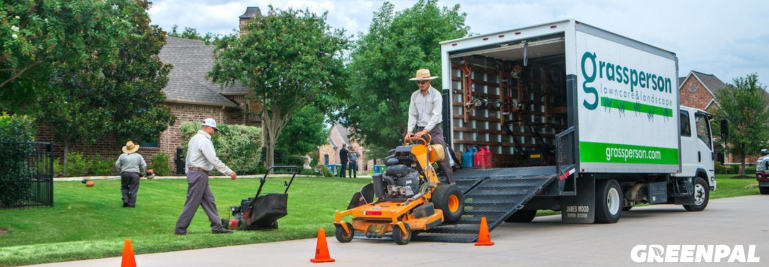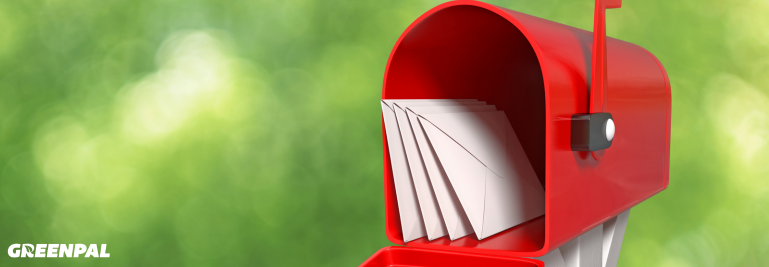Wet Grass Mowing:
What Do the Lawn Care Pros Really Think?
One of the biggest hurdles to mowing your client's lawns on time is the weather.
And while rain helps the grass to grow lush and green, it can also make mowing a lawn a pain, or can even lead to damaging the lawn.
But the question remains, should you mow your client’s lawn when it’s wet?
Well, as you may have suspected, the answer to this question is not a simple yes or no.
Knowing whether to mow a wet lawn or not takes some CAREFUL consideration.
Below you will find everything you need to know about mowing wet grass and other helpful landscaping tips.
TLDR: Should I mow wet grass?
The short answer is no. But when it comes to the reality of business operations. It's simply not possible to avoid mowing wet grass AND mow all of your client's lawns in a timely fashion. And that’s why we need to dive deeper into the dirty or in this case often muddy details.
When do you refuse to cut a lawn due to rain?
We turned to other lawn care pros to see how they handle rainy day situations. Here is what we found:
- Of the 331 lawn care professionals that responded to our poll, over 40%, stated that they will refuse to cut a lawn when there is standing water in the lawn. In my experience, mowing where there is standing water in the lawn is a surefire way to leave deep nasty ruts in the lawn. So I have to go with the majority on this one.
- Almost 33% said they draw the line during an active downpour.
- 14.8% told us that they refuse to mow when it is wet enough to damage the lawn.
- While less than 9% told us that they refuse to mow when the grass is simply wet.
- I take it they don't have many clients. And finally, an even smaller 3% said they NEVER refuse to cut a lawn.
Survey Results:
| Response | Percentage |
|---|---|
| Refuse to cut with standing water | 40% |
| Draw the line during an active downpour | 33% |
| Refuse when wet enough to damage the lawn | 14.8% |
| Refuse when the grass is simply wet | <9% |
| Never refuse to cut a lawn | 3% |

Risks of Mowing Wet Lawns
It’s true, there are a lot of risks to mowing lawns when they are wet. Not only is there an increased chance that ruts will form in the lawn, but cutting a wet lawn can also lead to a range of diseases that can impact your lawn. It is more likely to clump up.
But it gets even worse, wet grass can bog down lawn care equipment, causing blades to spin at less than optimal speeds.
Not only is this bad for your equipment, it inevitably leads to the blades tearing rather than cutting. This tearing is harder for grass to recover from than a clean cut. Which can lead to a variety of infections like Dollar Spot.
| Risk | Description |
|---|---|
| Formation of Ruts | Mowing over wet soil can leave deep ruts in the lawn. |
| Disease Spread | Wet conditions may promote the spread of lawn diseases. |
| Clumping | Wet grass can clump and not distribute evenly when cut. |
| Damage to Lawn Equipment | Wet grass can bog down mowers, causing blades to spin at suboptimal speeds and potentially leading to equipment damage. |
| Poor Grass Recovery | Tearing rather than cleanly cutting wet grass can make it harder for grass to recover, leading to infections like Dollar Spot. |

The Realities of Mowing Wet Grass
While it's not ideal to mow wet grass, the reality is, as a lawn care professional with a tight schedule to keep, sometimes you simply have no choice. Unless you are a weekend warrior or a novice with only a few days of lawns a week. Your schedule is not very flexible. And avoiding mowing wet grass after a rain, or even worse having to mow a lawn in the rain is simply a part of business.

4 Steps to Avoid Damaging a Wet Lawn
Fortunately, not all is lost if you have to mow a wet lawn. If you keep these 4 tips in mind, you can avoid damaging your client's lawn, and keep your route on schedule.
Step 1 - Cut Lawns Weekly
Cut your client's lawns every week to avoid overgrowth. While many clients may not want to pay for weekly service if you want to grow your company, it’s often best to cut bi-weekly clients as your company grows.
Step 2- Don’t Mulch Wet Grass
While mulching grass blades into the lawn with a mulching kit is a great way to keep nutrients in the lawn, when it comes to a wet lawn, it’s not a good idea to use a mulching kit.
Here’s the deal, mulching grass requires a lot more power from your mower as it causes your mower to cut each blade of grass multiple times into smaller bits. When the grass is wet, you are likely to damage your lawn and lawn mower if you are mulching the grass.

Step 3- Cut the Lawn Twice if Needed
Yea I know, it’s not ideal. But if you want your lawns to look good after you are done. When it comes to mowing wet grass, you may simply need to cut it twice. Once to cut the grass, and once to break up the clumps and catch any stray blades that may have been left behind after the first pass.
Step 4- Level the Lawn
This decision is ultimately on your clients. However, If you have a client with ruts and dips that collect water, you are likely to tear up the lawn when it’s wet. You can help reduce the damage caused by mowing the lawn with your mower by leveling the lawn.
Clients may not want to pay to level their lawn, however by offering them the service you can also let them know that if you don’t level the lawn, it’s likely to get damaged by the mower when the lawn is wet.

3 Tips Lawn Care Pros Should Keep in Mind When it Comes to Rainy Days-
Total Landscape Care offers these 3 excellent points to consider when dealing with rain delays:
1. Share your rain delay policy with your clients early |
2. Notify your clients of rain delays |
3. Don’t let a rainy day go to waste! |
On the occasion that you should encounter rain delays, it’s important to communicate with your clients and make use of your downtime to handle office work and tie up loose ends in your business.

What Strategies Can Minimize Damage When Mowing Wet Grass?
Key strategies include cutting lawns weekly, avoiding mulching wet grass, possibly mowing the lawn twice, and leveling the lawn to prevent water accumulation.
| Strategy | Description |
|---|---|
| Weekly Lawn Cutting | Regular cuts prevent overgrowth and minimize the impact of each mowing session. |
| Avoid Mulching | Mulching wet grass can damage both the lawn and the mower; avoid using a mulching kit on wet lawns. |
| Double Cutting | If necessary, mow the lawn twice: first to cut the grass, then again to break up clumps and catch stray blades, ensuring a cleaner look. |
| Level the Lawn | Address areas of the lawn that collect water by leveling; this reduces the risk of tearing up the lawn when it's wet and encourages more uniform drying and growth. |
What are the signs indicating that your lawn is too wet to mow?
If you notice water pooling on the surface, the ground gives a spongy sensation, or the blades of grass stick together as you tread on them, it might be too wet for mowing.
Take a stroll across your lawn to spot any signs of excess moisture like standing water or areas that feel particularly squishy. Should your steps leave behind prints, or if the ground feels too soft, consider postponing your mowing plans. Cutting the grass when it's this wet can harm the lawn by compacting the soil, injuring the grass, and causing uneven trimming.
What Is the Best Time of Day to Mow the Lawn?
Aim for the late afternoon or the early hours of the evening. This is when your lawn has had a chance to shake off the morning dew and any water from watering, and the heat of the day has begun to wane.
Choosing to mow during these cooler parts of the day is kinder to your grass and more comfortable for you. It steers clear of the midday sun, which can be taxing on both the lawn and the mower. This way, the grass faces less stress from heat, making its recovery from trimming much smoother.
Cutting Wet Grass and Rain Delays at the End of the Day
Look, if you are a professional lawn care provider for long enough, you are going to have rainy days. The simple fact of the matter is, mowing wet grass is part of the business.
Unfortunately, mowing wet grass isn't optimal for anyone. It’s damaging to the lawn, the grass, and your equipment. But at the end of the day, there are a few things you should keep in mind when it comes to running your lawn care company like a pro.
Fortunately for you, you are now armed with the info you need to make better-informed decisions for your business!











![20 Insider Tips on Starting a Lawn Care Business [What they DON'T tell you]](https://greenpal-production.s3.amazonaws.com/pq1qjlqbm6jk767q4ru6egdddf5c)
